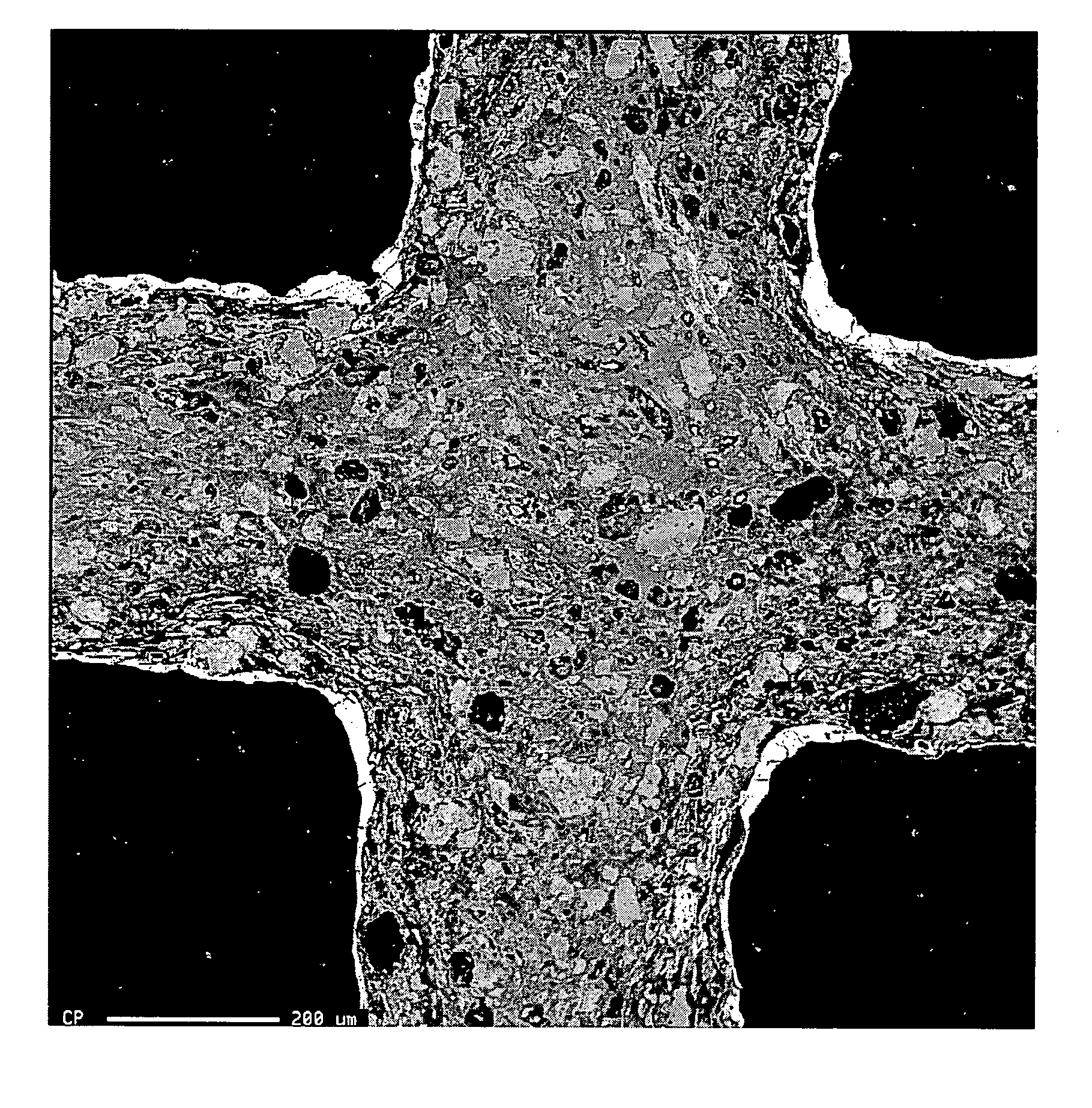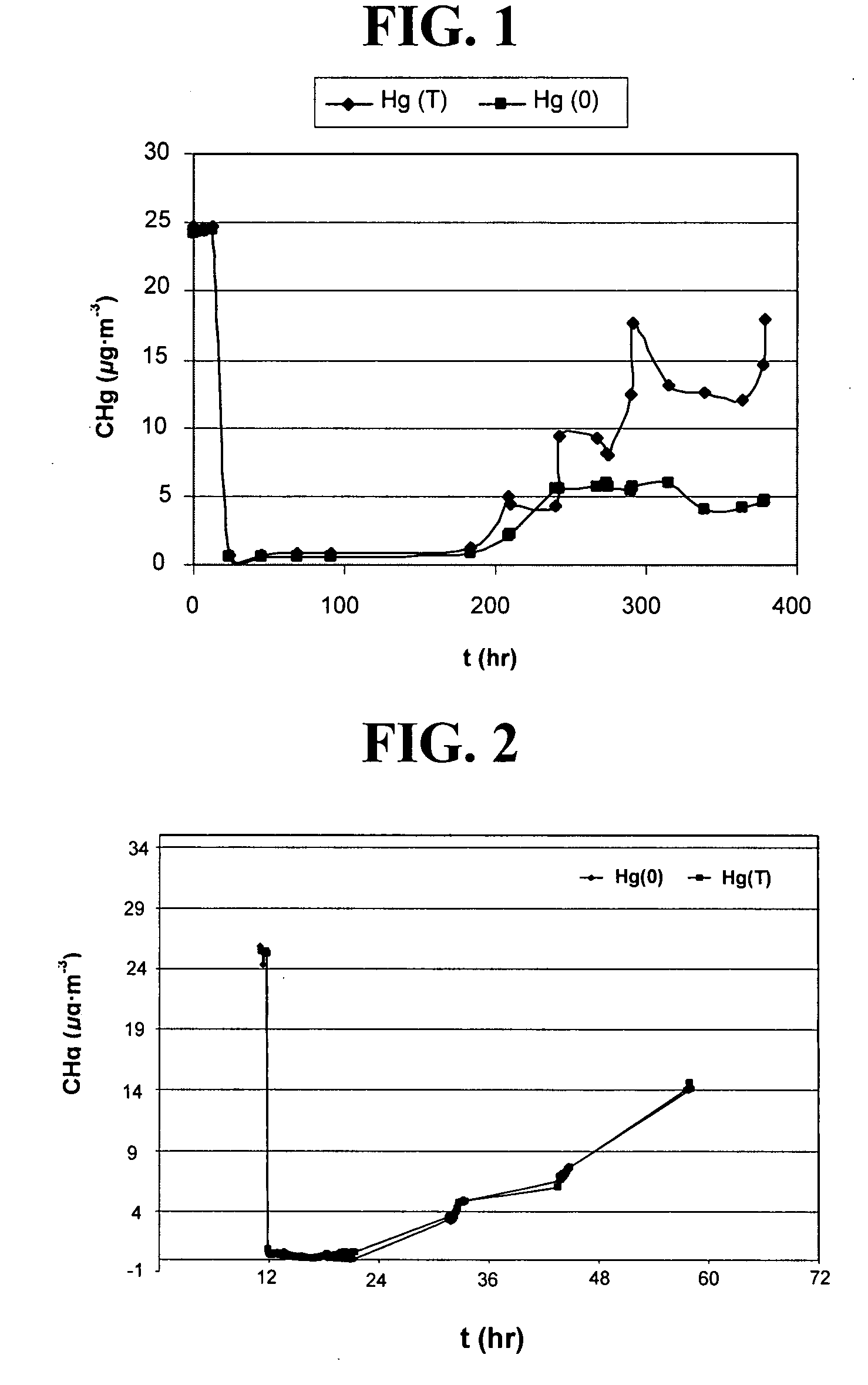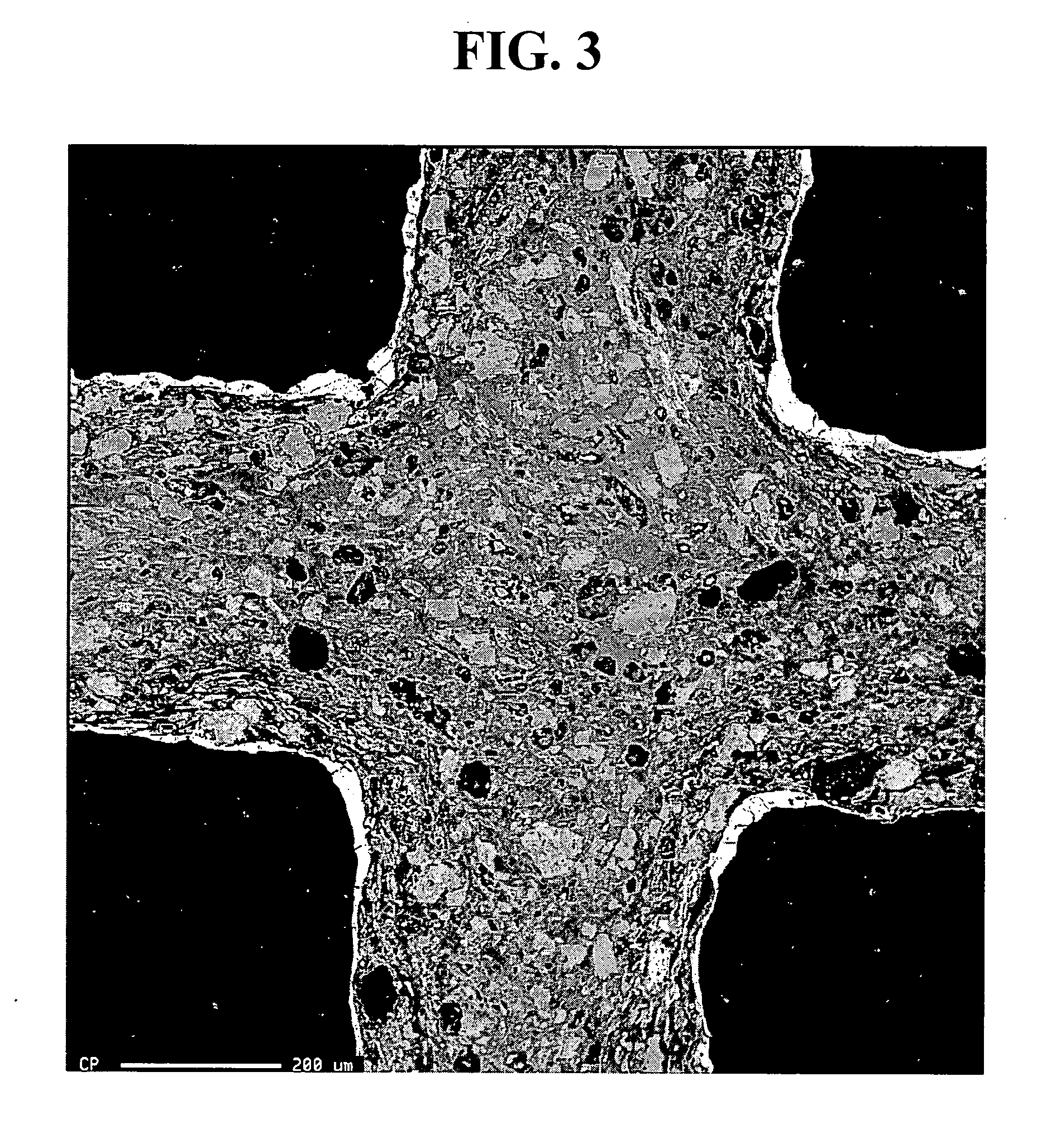Sorbent comprising activated carbon, process for making same and use thereof
- Summary
- Abstract
- Description
- Claims
- Application Information
AI Technical Summary
Benefits of technology
Problems solved by technology
Method used
Image
Examples
example 1
[0167]Phenolic resole resin from Georgia Pacific Co, with a viscosity of 100-200 cp was mixed with 10 wt % sulfur powder and 3.5 wt % phosphoric acid. The mixture was dried and cured at 150° C. into a solid mass. This mass was then ground to a fine solid powder with mean particle size of 15 microns. An extrusion batch containing liquid phenolic resin 44.7 wt %, the cured sulfur-phenolic resin powder mixture 18 wt %, sulfur 9.8 wt %, BH40 cellulose fiber 19.5 wt %, methocel F240 binder 4.5 wt %, phosphoric acid 1.5 wt % and 3-in-1 oil 1 wt % were mixed in a muller and then extruded through an extrusion die. Excellent quality honeycomb extrusions were obtained from this batch. The honeycombs were cured at 150° C., carbonized at 900° C. in nitrogen for 6 hours and then activated in carbon dioxide at 900° C. to obtain activated carbon honeycombs for mercury removal.
example 2
[0168]The sulfur containing resin powder mentioned in example 1 at 68 wt %, BH40 cellulose fiber at 20 wt %, F240 methocel at 8 wt %, LIGA at 1 wt %, 3-in-1 oil at 3 wt % and water superaddition at 50 wt % were mixed in a muller and extruded into honeycomb. Again excellent quality honeycomb extrusions were obtained in this case also. These honeycombs were cured at 150° C. and carbonized at 900° C. in nitrogen and activated in carbon dioxide.
example 3
[0169]A phenolic epoxy novolac from Durex Corporation (Durez 29217) with mean particle size of 22 microns, at 62 wt %, sulfur at 9 wt %, BH40 cellulose fiber at 18 wt %, F240 methocel at 8 wt %, LIGA at 1 wt %, 3-in-1 oil at 2 wt % and water superaddition at 45 wt % were mixed in a muller and extruded into honeycomb. Excellent quality honeycomb extrusions were obtained in this case also. These honeycombs were cured at carbonized and activated to obtain sulfur-containing carbon honeycombs.
PUM
| Property | Measurement | Unit |
|---|---|---|
| Fraction | aaaaa | aaaaa |
| Fraction | aaaaa | aaaaa |
| Fraction | aaaaa | aaaaa |
Abstract
Description
Claims
Application Information
 Login to View More
Login to View More - R&D
- Intellectual Property
- Life Sciences
- Materials
- Tech Scout
- Unparalleled Data Quality
- Higher Quality Content
- 60% Fewer Hallucinations
Browse by: Latest US Patents, China's latest patents, Technical Efficacy Thesaurus, Application Domain, Technology Topic, Popular Technical Reports.
© 2025 PatSnap. All rights reserved.Legal|Privacy policy|Modern Slavery Act Transparency Statement|Sitemap|About US| Contact US: help@patsnap.com



